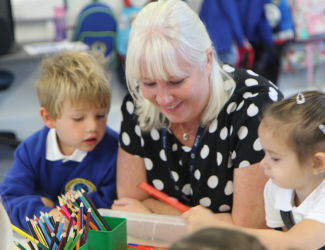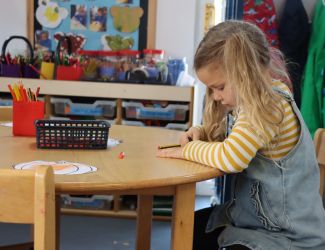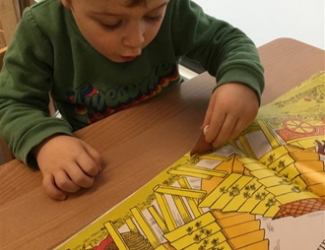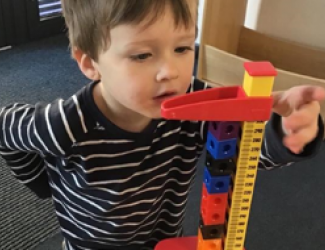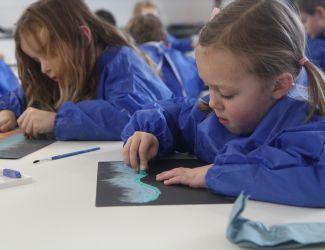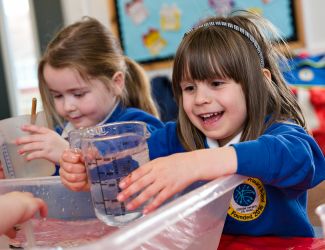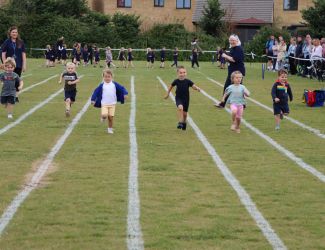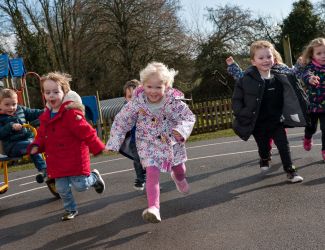Nursery Expressive Arts and Design Curriculum
Children will be taught...
EYFS Development Matters Statements Birth to Three
- Show attention to sounds and music.
- Respond emotionally and physically to music when it changes.
- Move and dance to music.
- Anticipate phrases and actions in rhymes and songs, like ‘Peepo’.
- Explore their voices and enjoy making sounds.
- Join in with songs and rhymes, making some sounds.
- Make rhythmical and repetitive sounds.
- Explore a range of sound-makers and instruments and play them in different ways.
- Notice patterns with strong contrasts and be attracted by patterns resembling the human face.
- Start to make marks intentionally.
- Explore paint, using fingers and other parts of their bodies as well as brushes and other tools.
- Express ideas and feelings through making marks, and sometimes give a meaning to the marks they make.
- Enjoy and take part in action songs, such as ‘Twinkle, Twinkle Little Star’.
- Start to develop pretend play, pretending that one object represents another. For example, a child holds a wooden block to her ear and pretends it’s a phone.
- Explore different materials, using all their senses to investigate them. Manipulate and play with different materials.
- Use their imagination as they consider what they can do with different materials.
- Make simple models which express their ideas.
EYFS Development Matters Statements Three and Four Year Olds
- Take part in simple pretend play, using an object to represent something else even though they are not similar.
- Begin to develop complex stories using small world equipment like animal sets, dolls and dolls houses etc.
- Make imaginative and complex ‘small worlds’ with blocks and construction kits, such as a city with different buildings and a park.
- Explore different materials freely, to develop their ideas about how to use them and what to make.
- Develop their own ideas and then decide which materials to use to express them.
- Join different materials and explore different textures.
- Create closed shapes with continuous lines, and begin to use these shapes to represent objects.
- Draw with increasing complexity and detail, such as representing a face with a circle and including details.
- Use drawing to represent ideas like movement or loud noises.
- Show different emotions in their drawings and paintings, like happiness, sadness, fear etc.
- Explore colour and colour-mixing.
- Listen with increased attention to sounds.
- Respond to what they have heard, expressing their thoughts and feelings.
- Remember and sing entire songs.
- Sing the pitch of a tone sung by another person (‘pitch match’).
- Sing the melodic shape (moving melody, such as up and down, down and up) of familiar songs.
- Create their own songs or improvise a song around one they know.
- Play instruments with increasing control to express their feelings and ideas.

